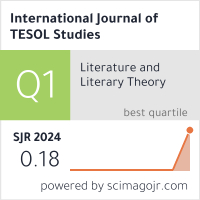2632-6779 (Print)
2633-6898 (Online)


Scopus
Ulrich’s Periodicals Directory (ProQuest)
MLA International Bibliography
MLA Directory of Periodicals
Directory of Open Access Journals (DOAJ)
QOAM (Quality Open Access Market)
British National Bibliography
WAC Clearinghouse Journal Listings
EBSCO Education
ICI Journals Master List
ERIH PLUS
CNKI Scholar
Gale-Cengage
WorldCat
Crossref
Baidu Scholar
British Library
J-Gate
ROAD
BASE
Publons
Google Scholar
Semantic Scholar
ORE Directory
TIRF
China National Center for Philosophy and Social Sciences Documentation
Nadya Shaznay Patel
Singapore Institute of Technology, Singapore
Abstract
Recently, in light of the global pandemic and calls for a shift in teaching with care (e.g. Bovill, 2020; Gravett, 2021), research has focused on the kinds of classroom discourse that create a supportive environment and establish social connectedness in blended learning environments or, in other words, teaching with care. According to Noddings (2012), teaching with care requires empathy. In fact, empathetic dialogue incorporated purposefully as part of a teacher’s instructional strategy can produce positive learning outcomes and may be considered relational pedagogy. Relational pedagogy focuses on establishing meaningful interpersonal relationships between teachers and their students (Hickey & Riddle, 2021). Yet, teachers find it hard to weave intentional empathy in their instruction. They find it challenging to sustain empathetic and dialogic interactions in class as many consider teaching to be ‘mechanical’ (p. 6) and their relationship with students to be more ‘business-oriented rather than a personal one’ (Sarki & Anjum, 2020, p. 24). This study aims to show that it could be done. It shows how I sought to be socially connected with and emotionally present for my students by focusing on empathetic and dialogic interactions in a critical thinking and communicating course. Data for this study were drawn from transcriptions of teacher-student interactions, student evaluation feedback and critical reflections. A convergent qualitative analysis through open and template coding revealed that empathetic and dialogic interactions do not need to be separately adopted instructional practices. They can be woven into classroom discourse while the teacher and students are engaged in intellectual discussions. Further, 38 pharmaceutical engineering undergraduates described their experiences of empathetic, dialogic interactions when they feel (1) cared for as individuals, (2) supported in their learning, and (3) acknowledged for the struggles they face. This study recommends that teachers of higher education adopt a relational pedagogy, focusing on their relationships with students and practising empathetic interactions. The practical suggestions of modelling the language of intellectual empathy and the communication of care will build a safe space for our students within diverse classrooms and a landscape of global uncertainties.
Keywords
Empathy, dialogic teaching, relational pedagogy, social presence, emotional connection